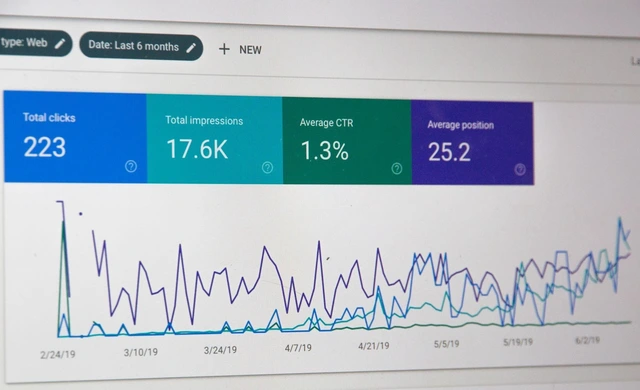Imagine you just finished a marketing effort that fell short of your expectations. You respond by trying a new tactic, but that fails, too. Instead of blindly trying a new approach, conversion tracking can illuminate your current strengths and areas for improvement.
The effectiveness of your advertising initiatives in bringing about your aims can be gauged through the use of conversion tracking. You can use this knowledge to guide your future actions to increase your business’s success.
How are Conversions Defined?
Conversions happen when your target audience does the action you want them to. A click on an ad counts as a conversion under this definition, long before the person who clicked the ad decided to buy the product or service it advertised.
Why do we need to monitor conversions?
Tracking conversions means keeping tabs on the steps customers take that get your business closer to achieving an objective. Customer purchases, cart additions, email openings, link clicks, landing page visits, and other similar events fall under this category.
Your company’s marketing activities, such as email and social media campaigns, are more likely to have the desired effect on your target audience if you keep track of the right metrics.
The goal of conversion tracking is to help you quantify the success of your marketing initiatives. Conversion monitoring will tell you how many individuals in your target demographic are actually interacting with your brand by doing things like contacting you, signing up for your mailing list, or purchasing your wares.
The most typical applications of conversion tracking are in paid advertising and electronic mail marketing, but it may be used with any campaign that includes links that readers can follow to reach a certain destination.
Related post: Top 5 Benefits Of Collaboration In Business
Why is it beneficial to keep tabs on conversion rates?
There are a number of good reasons to monitor conversions, including:
- Spending money wisely: You can base your budget on metrics like ROI and ROAS. Click here to read more on ROAS. Let us assume you have invested more in social media ads than email marketing, but you have seen better results from the latter thanks to conversion monitoring. Instead of just increasing your email marketing budget, you should reallocate funds from your social media advertising budget to email.
- Locating areas where enhancements can be made: You can uncover opportunities for improvement by comparing underperforming campaign strategies to those that have been more successful. For instance, you can zero in on the best-converting keyword by observing the performance of multiple ads that use that phrase.
- Separating views from purchases: The correlation between clicks and sales is not always there. The reality is that high click rates do not always indicate success.
Conversion tracking lets you see how many people clicked on your ads and how many of them converted.
Related post: How a VoIP Business Phone System Can Improve Communication And Efficiency
Measures of Success for Boosting Conversions
Keep an eye on the following key performance indicators (https://hbr.org/2020/09/what-are-your-kpis-really-measuri)(KPIs), which will provide you with a comprehensive picture of how effectively your marketing and advertising activities are converting:
The total amount of changes
The number of conversions is the sum of all conversions. But it does not assess how many people were converted versus how many were reached by your campaign.
Change in value
The number of people converted as a percentage of total individuals approached. It is frequently used to calculate the sales-to-visitor ratio on websites. Customers who make several transactions are not aggregated into a single purchase, therefore conversion rates do not necessarily reveal your most influential clients.
Rate of re-entry or “bounce”
A website’s pageview dividend is calculated by dividing pageviews by total visits. To rephrase, the bounce rate is a measure of how many visitors to a website only looked at one page against how many visitors looked at many pages. Individuals who see multiple pages on a website are likely more invested in making a purchase than those who do not.
Time of the session
The average time spent on your website by each visitor is tracked by this key performance indicator. Average session time is another common indicator, calculated by dividing the sum of all sessions on a website by the overall number of visits. Visitors that stay on your site for longer are more likely to make a purchase.
Views per session
The number of your site’s pages that a user visits (including product pages, frequently asked questions pages, and more) is a key performance indicator (KPI). Ad retargeting can be an effective method of re-engaging a customer who has shown interest in multiple products during a single visit.
Events
This metric KPI group is more general. It can be anything from a user clicking on a link to your social network page to watching a video, downloading some content, signing up for your newsletter, or filling out a contact form. A higher frequency of these occurrences is indicative of successful conversions from your website.
Average purchase price
The cost per acquisition is calculated using this key performance indicator. The average cost per customer acquisition can then be calculated. It is the key performance indicator that most closely tracks ROI and ROAS.
Insight
The number of conversions, conversions, bounce rate, time on site, pages per visit, events, and cost per acquisition are the most crucial key performance indicators for conversions.
How is the conversion rate determined?
You should not confuse the quantity of conversions with the conversion rate if you want to maximize your return on investment. Assessing your marketing campaign with an outside company like Hyros may have multiple conversion rates, each of which may be easily determined.
The conversion rate can be calculated by dividing the number of individuals who click on a particular link by the total number of people who are shown that link. Divide your newsletter’s main call-to-action link’s clicks by the number of emails open to find its conversion rate.
Similar to how you can figure out the conversion rate for new subscribers, you can do the same thing for new purchases. The percentage of site visitors who go on to make a purchase after seeing an item in a product listing is known as the “conversion rate” for cart additions.
Either the percentage of shoppers who actually make a purchase after adding an item to their cart or the ratio of completed sales to total visits to product pages might serve as an indicator of your store’s conversion rate.
Close but not quite their conversions can be retargeted regardless of the KPI being used to measure conversion rate. The ideal example would be abandoned shopping cart emails, which are sent out automatically to customers who have added things to their cart but have not yet checked out.
That is known as retargeting based on conversions. That email makes an effort to increase the percentage of cart additions that result in actual purchases. Improve conversion rates after calculating them.
The Best Way to start Tracking your Conversions
In order to get the full picture, it’s common practice to use many advertisings and analytics tools in tandem when setting up conversion tracking. Google AdWords and Google Analytics, two of the most popular conversion monitoring platforms, may be integrated with your marketing activities to provide you with detailed information on the performance of each.






